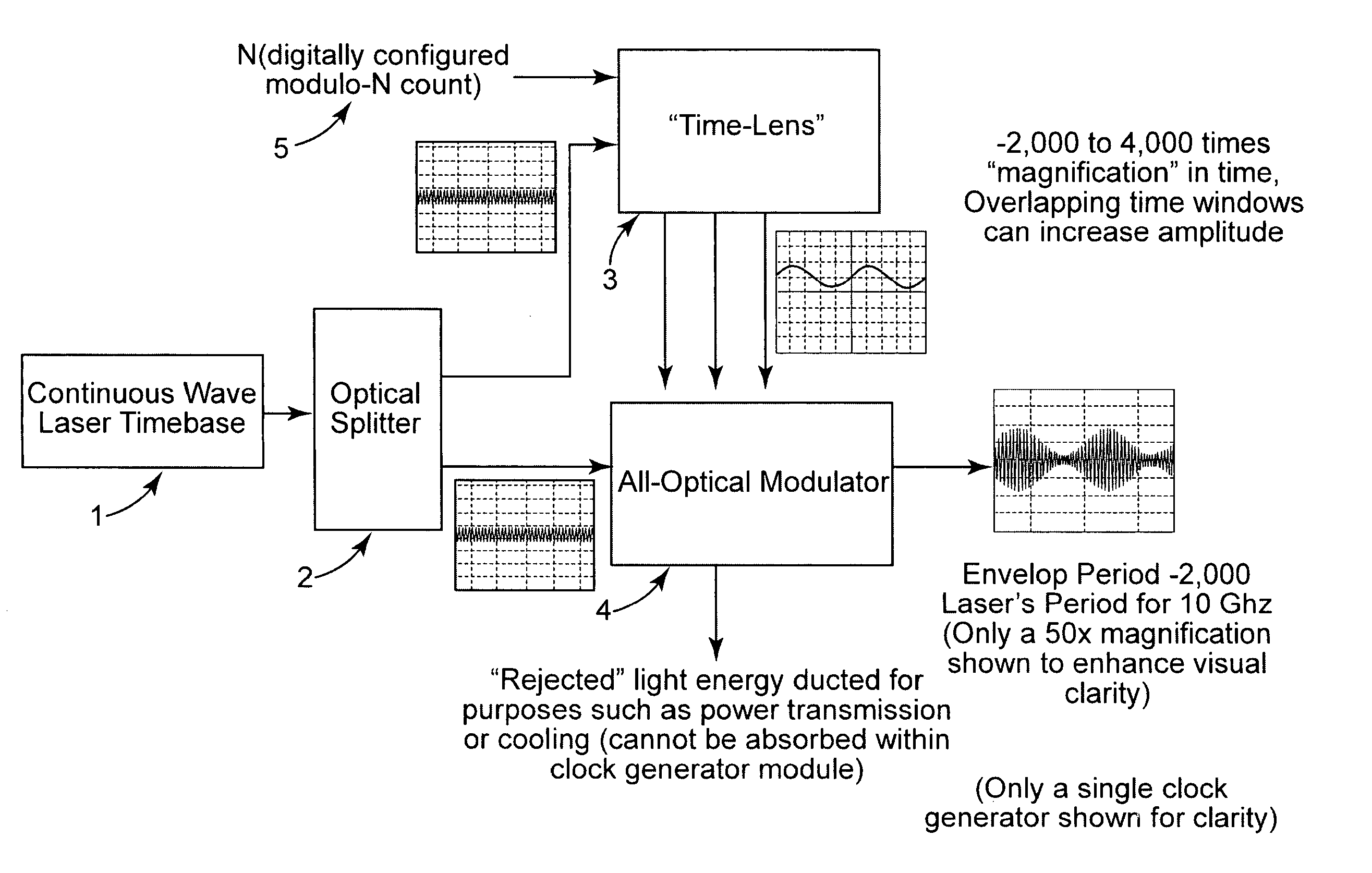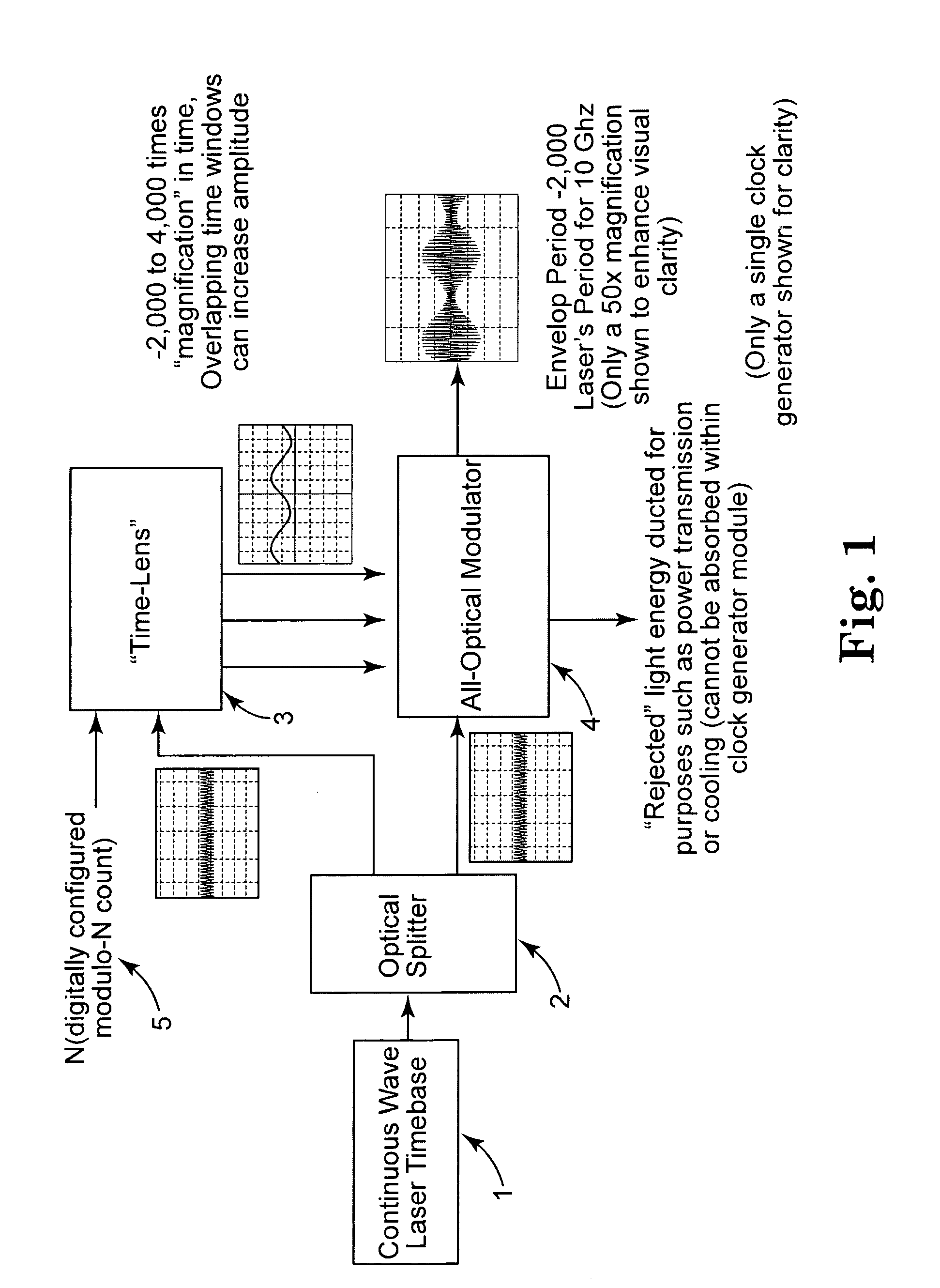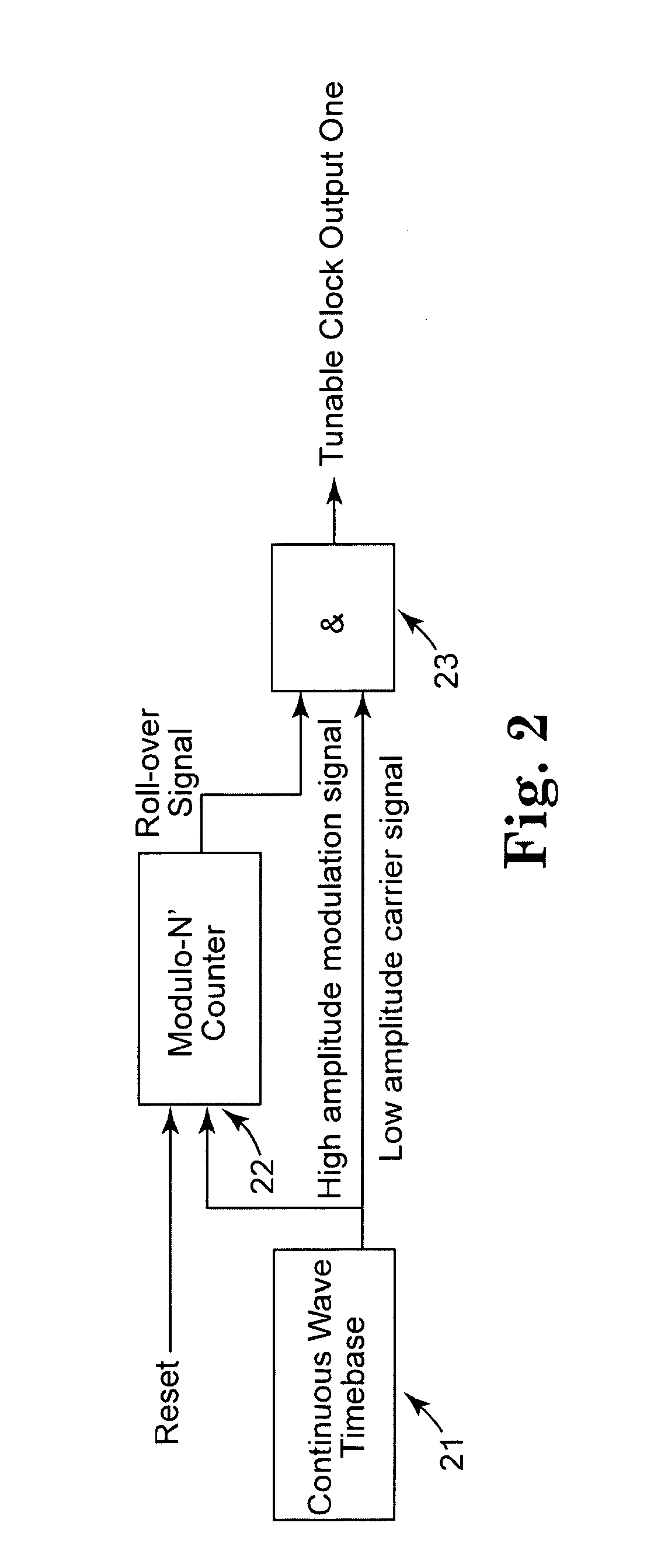Highly Tunable, Low Jitter Optical Clock Generation
- Summary
- Abstract
- Description
- Claims
- Application Information
AI Technical Summary
Benefits of technology
Problems solved by technology
Method used
Image
Examples
Embodiment Construction
[0015]The optical embodiment of the invention may be most rapidly understood by starting with an abstract digital model of the invention (FIG. 2). A continuous wave timebase [Block 21] drives a logical AND (denoted per IEEE standards with &) gate [Block 23] both directly and through a modulo-N counter [Block 22]. The resulting clock output has a period which is 2*N times the period of the continuous wave time base.
[0016]The AND gate in this model [Block 23] is not actually a boolean AND gate. When the modulation signal is logic low, the low amplitude carrier signal passes through the AND gate at a low amplitude. When the modulation signal from the Modulo-N counter is high (second half of the count range), the carrier signal is greatly amplified but retains the same carrier frequency. When the clock signal is received, the carrier frequency must be “averaged out”, yielding a conventional square wave clock at an output frequency much lower than the carrier frequency. Transmitting such...
PUM
 Login to View More
Login to View More Abstract
Description
Claims
Application Information
 Login to View More
Login to View More - R&D
- Intellectual Property
- Life Sciences
- Materials
- Tech Scout
- Unparalleled Data Quality
- Higher Quality Content
- 60% Fewer Hallucinations
Browse by: Latest US Patents, China's latest patents, Technical Efficacy Thesaurus, Application Domain, Technology Topic, Popular Technical Reports.
© 2025 PatSnap. All rights reserved.Legal|Privacy policy|Modern Slavery Act Transparency Statement|Sitemap|About US| Contact US: help@patsnap.com



